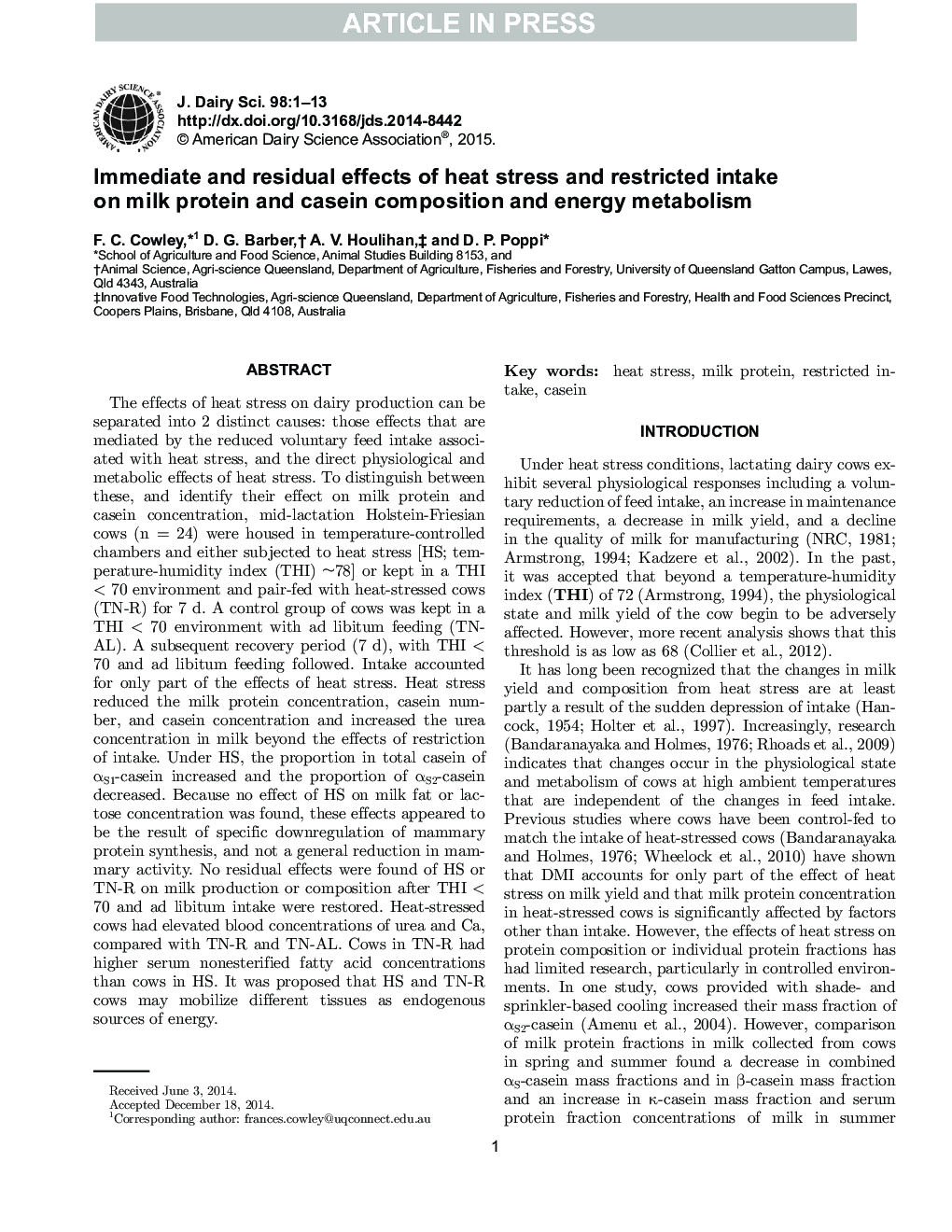| کد مقاله | کد نشریه | سال انتشار | مقاله انگلیسی | نسخه تمام متن |
|---|---|---|---|---|
| 10974749 | 1108028 | 2015 | 13 صفحه PDF | دانلود رایگان |
عنوان انگلیسی مقاله ISI
Immediate and residual effects of heat stress and restricted intake on milk protein and casein composition and energy metabolism
ترجمه فارسی عنوان
اثرات فوری و باقی مانده از استرس گرما و مصرف محدود در پروتئین شیر و کازئین ترکیب و متابولیسم انرژی
دانلود مقاله + سفارش ترجمه
دانلود مقاله ISI انگلیسی
رایگان برای ایرانیان
کلمات کلیدی
استرس گرما، پروتئین شیر مصرف محدود کازئین،
موضوعات مرتبط
علوم زیستی و بیوفناوری
علوم کشاورزی و بیولوژیک
علوم دامی و جانورشناسی
چکیده انگلیسی
The effects of heat stress on dairy production can be separated into 2 distinct causes: those effects that are mediated by the reduced voluntary feed intake associated with heat stress, and the direct physiological and metabolic effects of heat stress. To distinguish between these, and identify their effect on milk protein and casein concentration, mid-lactation Holstein-Friesian cows (n = 24) were housed in temperature-controlled chambers and either subjected to heat stress [HS; temperature-humidity index (THI) ~78] or kept in a THI < 70 environment and pair-fed with heat-stressed cows (TN-R) for 7 d. A control group of cows was kept in a THI < 70 environment with ad libitum feeding (TN-AL). A subsequent recovery period (7 d), with THI < 70 and ad libitum feeding followed. Intake accounted for only part of the effects of heat stress. Heat stress reduced the milk protein concentration, casein number, and casein concentration and increased the urea concentration in milk beyond the effects of restriction of intake. Under HS, the proportion in total casein of αS1-casein increased and the proportion of αS2-casein decreased. Because no effect of HS on milk fat or lactose concentration was found, these effects appeared to be the result of specific downregulation of mammary protein synthesis, and not a general reduction in mammary activity. No residual effects were found of HS or TN-R on milk production or composition after THI < 70 and ad libitum intake were restored. Heat-stressed cows had elevated blood concentrations of urea and Ca, compared with TN-R and TN-AL. Cows in TN-R had higher serum nonesterified fatty acid concentrations than cows in HS. It was proposed that HS and TN-R cows may mobilize different tissues as endogenous sources of energy.
ناشر
Database: Elsevier - ScienceDirect (ساینس دایرکت)
Journal: Journal of Dairy Science - Volume 98, Issue 4, April 2015, Pages 2356-2368
Journal: Journal of Dairy Science - Volume 98, Issue 4, April 2015, Pages 2356-2368
نویسندگان
F.C. Cowley, D.G. Barber, A.V. Houlihan, D.P. Poppi,
